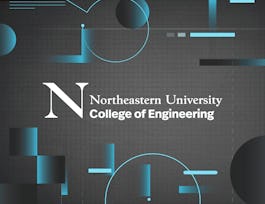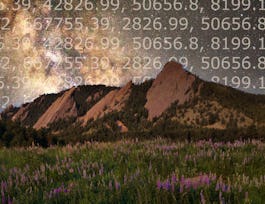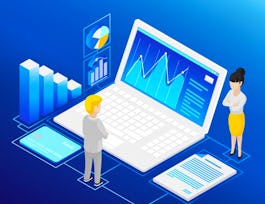This in-depth course starts by walking you through the basics of R programming, from setting up the environment with R and RStudio to understanding its user interface. As you move through the early sections, you'll dive into foundational programming concepts like data types, functions, and vector operations, enabling you to build a solid base in R. You’ll also learn how to handle complex structures like matrices and data frames, making it easy to organize and manipulate data efficiently.



R Programming for Statistics and Data Science

Instructor: Packt - Course Instructors
Sponsored by EdgePoint Software
Recommended experience
What you'll learn
Differentiate between data structures (vectors, matrices, data frames)
Conduct hypothesis testing and interpret statistical results
Assess the fit of linear regression models
Visualize data using ggplot2 for insightful presentation
Details to know

Add to your LinkedIn profile
5 assignments
October 2024
See how employees at top companies are mastering in-demand skills


Earn a career certificate
Add this credential to your LinkedIn profile, resume, or CV
Share it on social media and in your performance review

There are 11 modules in this course
In this module, we will explore the foundational steps needed to begin using R and RStudio for statistical analysis and data science. You’ll learn how to install and configure the necessary software, get familiar with the RStudio interface, and modify its appearance to suit your preferences. Additionally, you’ll understand how to install and manage essential packages for expanding R’s functionality.
What's included
6 videos1 reading
In this module, we will dive into the fundamental elements that make up R programming. You’ll learn how to create and work with different data types such as integers, doubles, characters, and logicals. We’ll explore how functions operate, how to build your own functions, and how coercion rules affect data types. Additionally, we’ll compare using the script editor versus the console for efficient coding.
What's included
8 videos
In this module, we will focus on vectors, one of the fundamental data structures in R. You’ll gain an understanding of how vectors are created and manipulated, learn about vector recycling, and discover how to name vectors for clarity. We’ll also cover techniques for slicing and indexing vectors, and explore how to adjust the dimensions of objects to suit your data needs. Additionally, you’ll be introduced to R’s help features to troubleshoot and expand your knowledge.
What's included
7 videos1 assignment
In this module, we will delve into matrices, another essential data structure in R. You’ll learn how to create matrices both traditionally and with single-line commands for efficiency. We will explore matrix recycling, how to index specific elements, and techniques for slicing matrices to retrieve subsets of data. Additionally, you’ll perform matrix arithmetic and operations, and explore related topics like handling categorical data, creating factors, and working with lists in R for more complex data management.
What's included
10 videos
In this module, we will cover the core programming concepts that enable you to write efficient and flexible R code. You’ll learn how to use relational and logical operators, work with vectors in logical operations, and control the flow of your program with if, else, and else if statements. We’ll also explore loops—such as for, while, and repeat—and dive deeper into building functions with considerations for scoping and best practices. These concepts are crucial for automating tasks and structuring more complex R programs.
What's included
10 videos
In this module, we will explore data frames, a vital data structure for handling tabular data in R. You’ll learn how to create data frames, use the Tidyverse package to streamline data manipulation, and import/export datasets efficiently. We’ll cover key techniques such as indexing, slicing, and extending data frames, along with strategies for managing missing data. These skills will equip you to work effectively with real-world datasets in R.
What's included
10 videos1 assignment
In this module, we will focus on essential data manipulation techniques that will allow you to work efficiently with large datasets in R. You’ll explore the dplyr package for data transformation, including filtering, mutating, and summarizing data. We’ll also cover how to sample data and utilize the pipe operator for chaining commands seamlessly. Lastly, you’ll learn to tidy datasets using functions like gather, separate, unite, and spread, preparing data for analysis in a structured and clean format.
What's included
7 videos
In this module, we will explore the powerful ggplot2 package for creating various types of data visualizations in R. You’ll learn how to build histograms, bar charts, box plots, and scatterplots to visually interpret your data. We’ll also revisit the role of variables and how they can be represented in graphical formats. These visualizations will help you uncover trends, patterns, and insights that are crucial in statistics and data science.
What's included
8 videos
In this module, we will cover key concepts in exploratory data analysis (EDA) that help summarize and understand the structure of data. You’ll learn the differences between populations and samples, calculate central tendency measures, and explore data distribution through skewness. We’ll also dive into the measures of variability such as variance, standard deviation, and coefficient of variation, concluding with an introduction to covariance and correlation for identifying relationships between variables.
What's included
5 videos1 assignment
In this module, we will explore the fundamental concepts of hypothesis testing in statistical analysis. You’ll learn about various distributions, the importance of standard error, and how to calculate and interpret confidence intervals. We’ll also cover how to conduct hypothesis tests, the role of p-values, and the difference between testing when the population variance is known versus unknown. Additionally, you’ll compare two means in both dependent and independent sample scenarios, while understanding potential errors that can occur during hypothesis testing.
What's included
9 videos
In this module, we will dive into the fundamentals of linear regression analysis. You’ll learn about the linear regression model, how it compares to correlation, and how to represent it geometrically. We’ll guide you through running your first regression in R, interpreting the regression table, and understanding the decomposition of variability using SST, SSR, and SSE. Additionally, you’ll explore the significance of R-squared and how it reflects the model’s explanatory power. These concepts are crucial for understanding relationships in data.
What's included
7 videos2 assignments
Instructor

Offered by
Why people choose Coursera for their career




Recommended if you're interested in Data Science

Northeastern University

Johns Hopkins University

University of Colorado Boulder

Johns Hopkins University

Open new doors with Coursera Plus
Unlimited access to 10,000+ world-class courses, hands-on projects, and job-ready certificate programs - all included in your subscription
Advance your career with an online degree
Earn a degree from world-class universities - 100% online
Join over 3,400 global companies that choose Coursera for Business
Upskill your employees to excel in the digital economy


